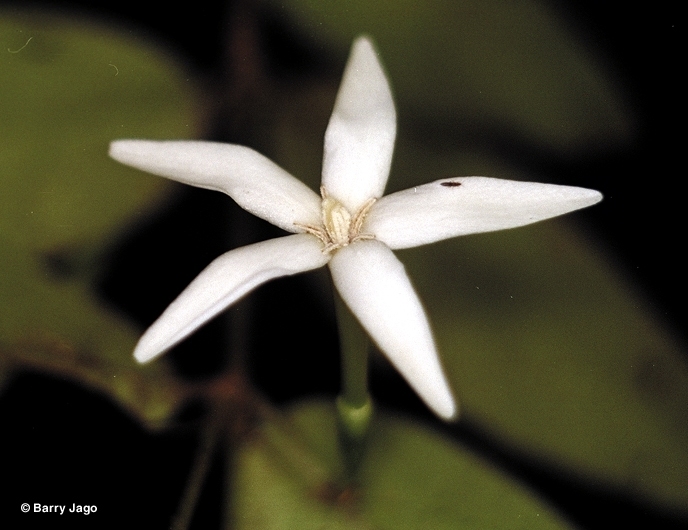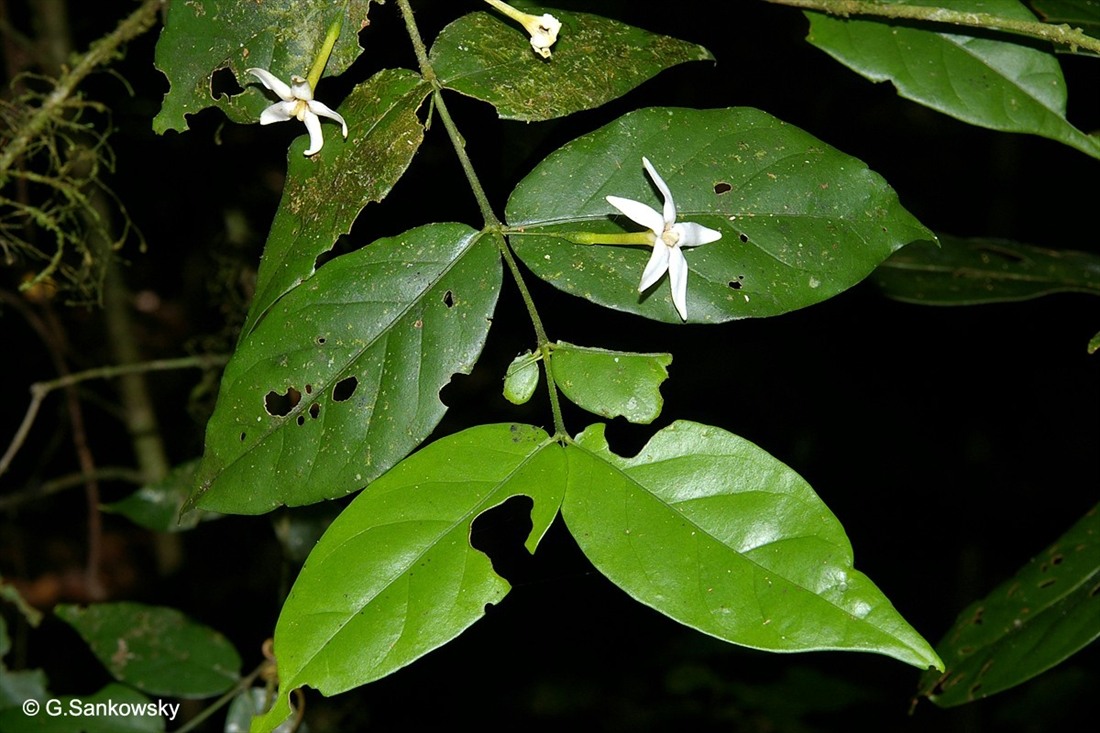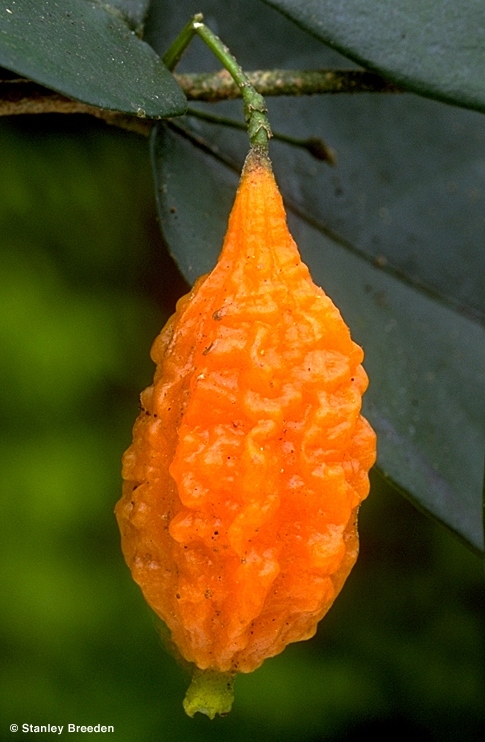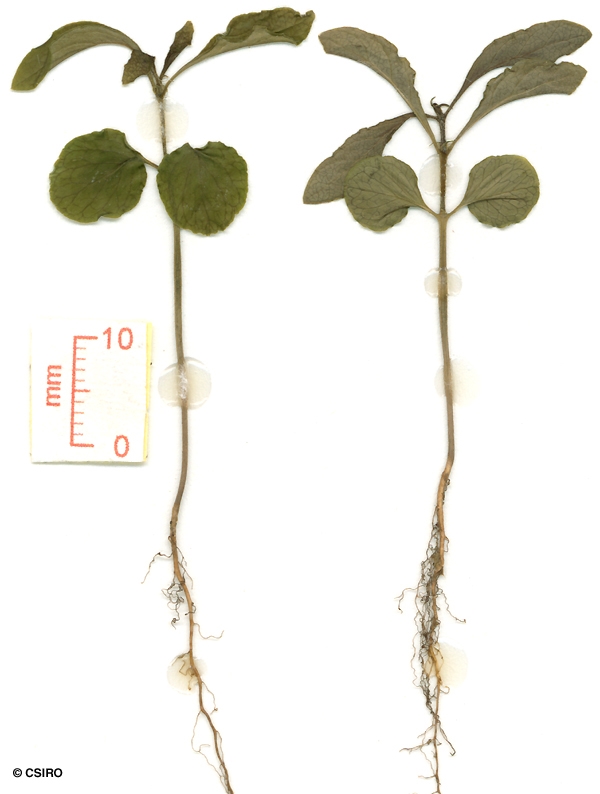Australian Tropical Rainforest Plants - Online edition
Randia tuberculosa F.M.Bailey






Bailey, F.M. (1891) Queensland Department of Agriculture and Stock. Botany Bulletin 2: 12. Type: Queensland. Scrubs of Harveys Creek, off Russell River, Bellenden-Ker Expedition, 1889. Holo: BRI?.
Usually flowers and fruits as a shrub about 1-2 m tall.
Stipules about 4 mm long, +/- broadly triangular at the base but narrowed into a long acuminate tip at the apex. Spines, about 8-20 mm long, often present on the twigs above each pair of leaves. Leaf blades +/- ovate, about 8.5-10 x 4.9-6 cm, petioles very short, about 0.1-0.2 cm long. Domatia, if present, are small circular pits with hairs at the orifice.
Peduncle + pedicel about 15-25 mm long. Calyx tube (hypanthium) about 2-4 mm long, lobes sometimes unequal, three large and two small, or uniform, each about 0.5-1.5 mm long. Corolla tube about 12-20 mm long, lobes about 7-15 mm long. Anthers +/- sessile, about 3-4 mm long. Tips of the anthers protruding from the throat of the corolla tube at anthesis. Style + stigma about 17 mm long, swollen part about 3-4 mm long, much wider than the style, and 2-lipped at the apex.
Cotyledons stipulate, +/- orbicular, about 8-12 mm diam., margins undulate. First pair of leaves opposite and stipulate, margins undulate. At the tenth leaf stage: leaf blade lanceolate, apex acuminate but blunt at the tip, base obtuse, margin often undulate. Midrib raised on the upper surface. Stipules 2-3.5 mm long, interpetiolar, linear or subulate. Stem spiny, spines about 4-10 mm long, produced on lateral shoots slightly above each pair of leaves. Seed germination time 56 to 432 days.
Endemic to Queensland, occurs in NEQ. Altitudinal range from near sea level to 1100 m. Grows as an understory plant in well developed lowland, upland and mountain rain forest.





